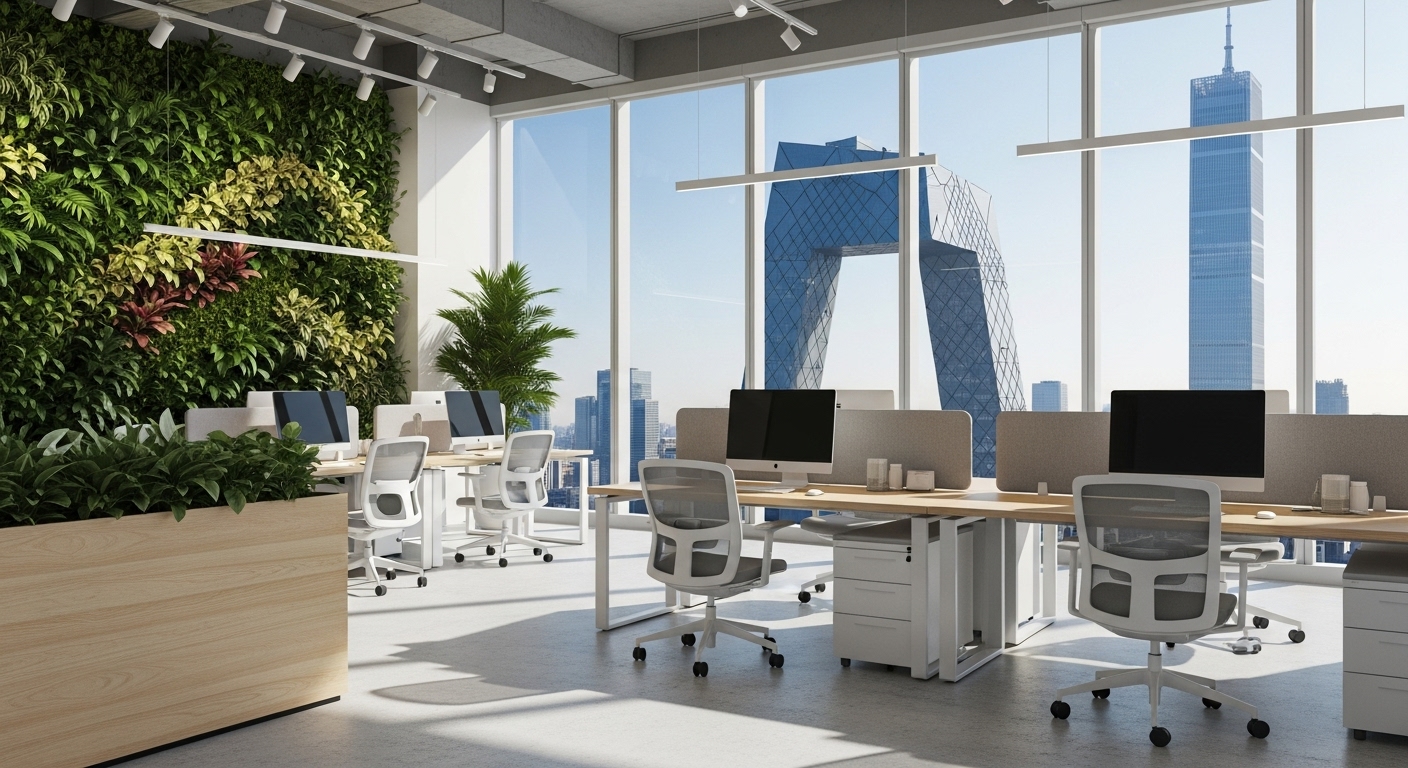Choosing a new workspace is one of the most significant decisions a business can make. It’s far more than a line item on an expense report; it’s a strategic investment in your company’s future, culture, and productivity. In today’s post-pandemic landscape, the very concept of ‘the office’ has been redefined. Businesses are moving away from traditional, rigid leases towards more dynamic, human-centric environments that support hybrid models and employee well-being. This shift demands a more sophisticated approach to selection. Simply calculating cost per square foot is no longer enough. The right space acts as a catalyst, fostering collaboration, attracting top talent, and reinforcing your brand identity. This guide provides a comprehensive framework to navigate this complex decision. We will walk you through defining your core needs, understanding the true financial picture, leveraging location intelligence, and aligning your physical space with your company’s cultural DNA to find a workspace that doesn’t just house your team, but helps it thrive.
Defining your non-negotiables: beyond square footage
Before you even begin looking at listings, the critical first step is to look inward. A successful workspace search is built on a deep understanding of your organization’s unique needs, workflows, and aspirations. Start by moving beyond the simple question of ‘how many desks?’ and instead ask ‘how do we work best?’ Analyze your team’s daily activities. Do you require large, open areas for constant collaboration, or do you need quiet, focused zones for deep work? A sales-driven team might need more client-facing meeting rooms, while a software development team might prioritize isolated pods. The rise of hybrid work adds another layer of complexity. Surveying your employees is no longer a luxury; it’s essential. Understand their preferences for in-office days, their commuting challenges, and what kind of environment would make their time at the office most valuable. This data will help you create a ‘workplace persona’ that guides your search. Also, consider your technological infrastructure. What are your needs for server rooms, high-speed internet connectivity, and AV equipment? Finally, think about your brand. Your office is a physical manifestation of your company’s values. A minimalist, tech-forward startup will have a different aesthetic than a traditional financial services firm. Establishing these foundational pillars—workflow, employee needs, technology, and brand identity—creates a clear scorecard to measure potential spaces against.
Decoding the financials: the total cost of occupancy
One of the most common pitfalls in choosing a workspace is focusing solely on the monthly rent. The sticker price is just the tip of the iceberg. To make a sound financial decision, you must calculate the Total Cost of Occupancy (TCO), which encompasses all expenses associated with leasing and operating a space. This begins with upfront capital expenditures. Will the space require a custom fit-out? Costs for construction, architectural design, cabling, and security system installation can be substantial. Then there’s the furniture, fixtures, and equipment (FF&E) needed to make the space functional. Beyond these initial costs are the recurring operational expenses. In a traditional lease, this often includes Common Area Maintenance (CAM) charges, property taxes, and insurance. Don’t forget utilities like electricity, water, internet, and janitorial services. When you compare this complex web of expenses to a flexible or serviced office, the picture becomes clearer. While the per-desk price of a flex space may seem higher initially, it typically bundles most of these costs into a single, predictable monthly payment. A thorough TCO analysis allows you to compare different types of spaces on an apples-to-apples basis, preventing costly surprises and ensuring your workspace decision aligns with your long-term financial strategy.
Location intelligence: choosing a hub for talent and clients
The old real estate mantra of ‘location, location, location’ is still relevant, but the definition of a prime location has evolved. It’s no longer just about a prestigious downtown address. Today, strategic location analysis is about accessibility for the two most important groups of people: your talent and your clients. The first step is to map where your current employees live. A central location that is difficult and expensive for the majority of your team to commute to can negatively impact morale and retention. Analyze public transportation routes, parking availability, and average commute times. In an era of fierce competition for talent, a convenient location is a powerful recruiting tool. Secondly, consider your client base. If frequent in-person meetings are crucial, your office should be easily accessible to them. Beyond accessibility, evaluate the local ecosystem. What amenities are within walking distance? Proximity to coffee shops, restaurants, fitness centers, and childcare can significantly enhance your employees’ work-life balance. The character of the neighborhood should also align with your brand. A cutting-edge tech company might thrive in a vibrant, up-and-coming district, while a corporate law firm may require a more established business hub. Using data to guide your location strategy ensures your office is not an isolated island but a well-integrated hub that supports both your people and your business goals.
Aligning space with culture: designing for interaction and identity
Your office is a powerful, non-verbal communicator of your company culture. It’s the stage on which your company’s values and workflows play out every day. A misaligned space can create friction, while a well-designed one can act as an engine for your desired culture. For instance, if you claim to have a flat, collaborative culture but your leadership is siloed in corner offices, the space sends a conflicting message. The physical layout should be intentionally designed to foster the types of interactions you want to encourage. This has led to the rise of ‘zoned’ office designs, which move beyond the simple open-plan vs. cubicle debate. A zoned office might feature a bustling ‘plaza’ for collaboration, a quiet ‘library’ for focused work, private phone booths for calls, and comfortable lounges for informal social interaction. This variety allows employees to choose the environment best suited to their task at hand. Furthermore, the workspace is a three-dimensional branding opportunity. Use colors, materials, and graphics that reflect your brand identity. Displaying company milestones, mission statements, or customer stories can reinforce a sense of shared purpose. Amenities also play a critical role. A well-stocked kitchen, wellness rooms, or outdoor spaces signal that you value employee well-being. Ultimately, your workspace should feel like a natural extension of your brand and a physical home for your culture.
The flexibility factor: traditional lease vs. agile workspaces
A crucial decision in today’s market is the type of lease agreement that best suits your business. The choice generally falls between a traditional lease and more agile, flexible workspace solutions like coworking or serviced offices. A traditional lease involves a long-term commitment, typically 5-10 years, for a private, unfurnished space. Its main advantage is control; you have complete autonomy over the design, branding, and layout. This can be ideal for established companies with predictable headcounts and specific security or operational needs. However, it comes with significant upfront capital investment for the fit-out and furnishing, and the long-term nature offers little flexibility if your business needs to quickly scale up or down. On the other side of the spectrum are flexible workspaces. These offer shorter-term agreements, from month-to-month to a year or two, for fully furnished and serviced offices. The upfront cost is minimal, and amenities like internet, cleaning, and reception services are included in a single monthly fee. This model is perfect for startups, small businesses, or companies entering a new market, as it minimizes risk and preserves capital. The trade-off is less control over the environment and potential distractions from other companies sharing the space. Many businesses are now opting for a hybrid approach, maintaining a smaller core headquarters on a traditional lease while using flexible spaces as regional hubs or for specific project teams.
Future-proofing your footprint: planning for scale and change
Choosing a workspace isn’t just about meeting your needs today; it’s about anticipating your needs for the next three, five, or even ten years. Signing a long-term lease on a space you’ll outgrow in 18 months is a costly mistake. Therefore, building scalability into your decision-making process is essential for long-term success. When considering a traditional lease, inquire about expansion rights. Can you secure a ‘right of first refusal’ on adjacent spaces in the building? This would give you the option to expand seamlessly as your team grows. The design of the space itself can also be future-proofed. Opt for modular furniture and adaptable layouts that can be easily reconfigured without major construction. For example, using movable walls or pods instead of permanent built-in offices allows you to adjust the ratio of collaborative to private space as your needs evolve. Technology also plays a key role. A robust and scalable IT infrastructure will support your growth without requiring a complete overhaul. For companies facing uncertain growth trajectories, a flexible workspace portfolio offers the ultimate form of future-proofing. You can easily add or subtract desks and offices on a monthly basis, ensuring your real estate footprint always matches your current headcount and budget. By thinking ahead, you can select a space that serves not just as a container for your business, but as a flexible platform for its future growth.
Ultimately, the journey from searching for a space to achieving workplace synergy is a deeply strategic one. It requires a holistic view that balances finance, logistics, human resources, and brand identity. By moving past the outdated metric of mere cost per square foot, you can begin to see your workspace for what it truly is: a dynamic tool for shaping culture, attracting elite talent, and driving business objectives. The process begins with introspection—clearly defining how your team works and what it needs to succeed. It then demands rigorous financial diligence to understand the total cost of occupancy, not just the rent. This is followed by intelligent location analysis focused on the well-being of your team and the convenience of your clients. Finally, it culminates in a choice that reflects your culture, embraces flexibility, and anticipates future growth. Whether you choose a traditional lease, a vibrant coworking hub, or a hybrid portfolio, an informed and deliberate decision will pay dividends in productivity, engagement, and innovation for years to come. Your next workspace is not just a location; it is a destination for your company’s ambition.





